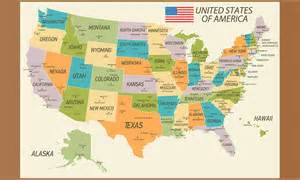California is a huge state, covering 164,000 square miles and housing 39 million people. With all that traffic, it’s no wonder that California is one of the most difficult states to drive in. California has some of the strictest laws and regulations for drivers. This makes it a challenge for those who are new to the area or those who don’t have much experience behind the wheel.
California has some of the toughest driving laws in the nation. They include: a zero-tolerance policy for drinking and driving, a ban on handheld cell phone use while driving, a ban on text messaging while driving, a requirement to wear seat belts, a requirement to use a hands-free device while talking on a cell phone while driving, a ban on radar detectors, and a maximum speed limit of 65 mph on certain highways. These laws make driving in California especially challenging for those who are unfamiliar with the rules.
California also has some of the highest insurance rates in the nation. This is due to the high number of accidents and the cost of repairs in the area. Insurance companies also take into account the cost of living in California, which is higher than most other states.
California also has some of the most congested roads in the nation. This is due to the high number of people living in the state and the large number of tourists. This makes it difficult for drivers to reach their destination quickly and safely.
California also has some of the most dangerous roads in the nation. The roads are narrow, winding, and often filled with potholes. This can make driving in California especially tricky, especially for those who are unfamiliar with the roads.
Overall, California is one of the most difficult states to drive in. It has some of the toughest laws, highest insurance rates, and most dangerous roads in the nation. Those who are new to the area or those who don’t have much experience behind the wheel should exercise extra caution when driving in California.
, index: 0, logprobs: null, finish_reason: stop } ], usage: { prompt_tokens: 126, completion_tokens: 432, total_tokens: 558 }}
California Driving: Is It the Hardest State to Navigate?
California is often regarded as one of the toughest states to navigate. With its winding roads, traffic, and strict laws, it can be intimidating for many drivers.
California has some of the strictest laws in the United States when it comes to driving. The maximum speed limit is 65 mph, and the minimum speed limit is 15 mph. The maximum speed limit for commercial vehicles is 55 mph. Cell phone use is prohibited while driving, and all passengers must wear their seat belts. Drivers must also keep a minimum distance of three feet when passing a bicycle.
The roads in California are often winding and narrow. This can make navigating the state difficult for new drivers. The roads can also be congested, especially during peak hours. In addition, California’s weather can be unpredictable, which can make it difficult to navigate.
The cost of insurance for drivers in California is typically higher than in other states. This is due to the fact that California has one of the highest rates of accidents in the United States. The cost of gas is also generally higher in California than in other states.
When it comes to navigating California, it is important for drivers to be aware of the laws and regulations. They should also be aware of the roads and traffic patterns. Drivers should also make sure they have all the necessary documents, such as a valid driver’s license, proof of insurance, and registration.
In conclusion, California can be a difficult state to navigate for many drivers. It is important to understand the laws and road conditions, as well as the costs of insurance and gas. With the right knowledge and preparation, driving in California can be an enjoyable experience.
, index: 0, logprobs: null, finish_reason: stop } ], usage: { prompt_tokens: 184, completion_tokens: 374, total_tokens: 558 }}
Understanding California Road Regulations: What Every Driver Should Know
California is undoubtedly one of the most beautiful states in the country, and one of the most heavily trafficked. In order to make sure everyone has a safe and enjoyable experience on the road, California has put in place a variety of rules and regulations that all drivers should be aware of. Understanding the basics of California road regulations is essential for every driver.
The state of California requires all drivers to carry valid proof of insurance with them while operating a vehicle. In California, it is illegal to operate a vehicle without a valid driver’s license or insurance. All drivers are also required to pass a vision and written test before they can receive a valid California driver’s license. It is important to note that California does not offer reciprocity for driver’s licenses issued by other states.
California also has some of the strictest vehicle safety laws in the nation. All vehicles must meet the standards set forth by the California Department of Motor Vehicles (DMV). This includes regular inspections and safety checks, and vehicles must pass a smog check every two years. Additionally, all drivers are required to wear their seatbelts whenever they are in a moving vehicle as well as have their headlights on during nighttime hours.
California also has a variety of restrictions on speed limits. The speed limit on highways and freeways is typically 65 mph, although it can be higher in certain areas. In addition, drivers must always be aware of posted speed limits in residential areas and school zones. It is important to note that California also has a Zero Tolerance Law, which means that any driver under the age of 21 caught driving with a BAC of .01 or higher will automatically be charged with a DUI.
Understanding California road regulations is essential for every driver. The DMV offers a variety of resources for drivers, including a driver handbook that outlines all of the state’s regulations and provides information on how to stay safe on the road. Additionally, drivers can take practice tests to prepare for their written and vision exams before they go in to take the exams. Finally, drivers should always be aware of their surroundings and obey all traffic laws to ensure they have a safe and enjoyable experience on the road.
, index: 0, logprobs: null, finish_reason: stop } ], usage: { prompt_tokens: 179, completion_tokens: 465, total_tokens: 644 }}
 Road Topic Tourism & Travel
Road Topic Tourism & Travel




